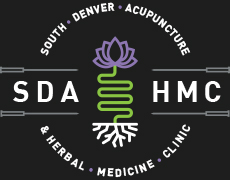About Traditional Chinese Medicine
What Is Traditional Chinese Medicine?
Traditional Chinese Medicine or TCM is a system of healing that has been used throughout the world for thousands of years. Traditional Chinese medicine utilizes a variety of therapies such as acupuncture and herbal medicine as well as dietary therapy, moxibustion, tui na massage, cupping, gua sha and auricular therapy to restore the body to a homeostatic balance.Traditional Chinese medicine originated as in interpretation of nature placed upon the human body. The ancient doctors would observe the patterns and cycles of nature and noticed how these same cycles and patterns could be seen in the human body. Through years of observation and experimentation, methods were found to help correct imbalances and harmful patterns that caused disease as well as methods of prevention.
Traditional Chinese medicine uses several diagnostic methods to treat not only the symptoms and complaints that a patient may have, but also what the underlying or root cause of the problems are.
Most practitioners of traditional Chinese medicine will use a combination of Eight Principles, Qi, Blood & Body Fluids, the Five Elements and Pathogen and Organ Differentiation methods to determine a patients condition and develop a unique treatment plan. It is important to note that in the following descriptions that traditional Chinese medicine has a unique set of vocabulary that includes a variety of words that will often refer to a set of qualities or functions rather than a specific cell type, molecule or compound, or anatomical organ as seen in the western medical model. It is also important to note that traditional Chinese medicine is a macroscopic science meaning that it is more concerned with the observation and change of seemingly whole organism effects rather than the narrow and focused microscopic science of western medicine. Traditional Chinese Medicine can be likened to the view of traffic on a highway as seen by the reporter in the helicopter versus what traffic looks like by a person in a car on the highway. Keeping these ideas in mind will help to avoid confusion in the discussion that follows.
The Eight Principles Method
Interior
Exterior
Excess
Deficiency
Hot
Cold
Yin
Yang
Remember that we are talking about collections of functions and qualities and not necessarily the blood that courses through your veins or the saliva in your mouthQi is often translated as energy or vital force, and encompasses the motive and active force in the body, it is life, it is both the chemical energy found in food as well as the production of it throughout all organisms. Blood is described as the nourishment and moistening of the body which can refer to the bodies ability to absorb and distribute nutrients, the lubrication of joints and the quickness of the mind. Body fluids can refer to the fluids throughout our body, both that found in and around our cells as well as saliva, sputum and other bodily fluids. TCM diagnostic methods will look at the relative abundance or lack of these substances to further differentiate a persons problem. The Five Elements are a collection of qualities that can be observed throughout nature and the body and are a further analysis of the principles of Yin and Yang. These elements are Fire, Earth, Metal, Water, and Wood. Each of these elements has associated qualities such as a color, a season, a sound, an organ, going so far as to include body types, times of the day, tissue types and geographic directions. Each of these elements generates one element and controls a second element, resulting in a feedback system that should remain in balance.
Qi, Blood and Body Fluids refer to the fundamental substances in the body as seen in traditional Chinese medicine.
Lung
Large Intestine
Spleen
Stomach
Liver
Gallbladder
Urinary Bladder
Kidney
Heart
Small Intestine
Pericardium
San Jiao
Learn About Treatments
To learn about the treatment modalities used traditional Chinese medicine practitioners, click on the links below:
